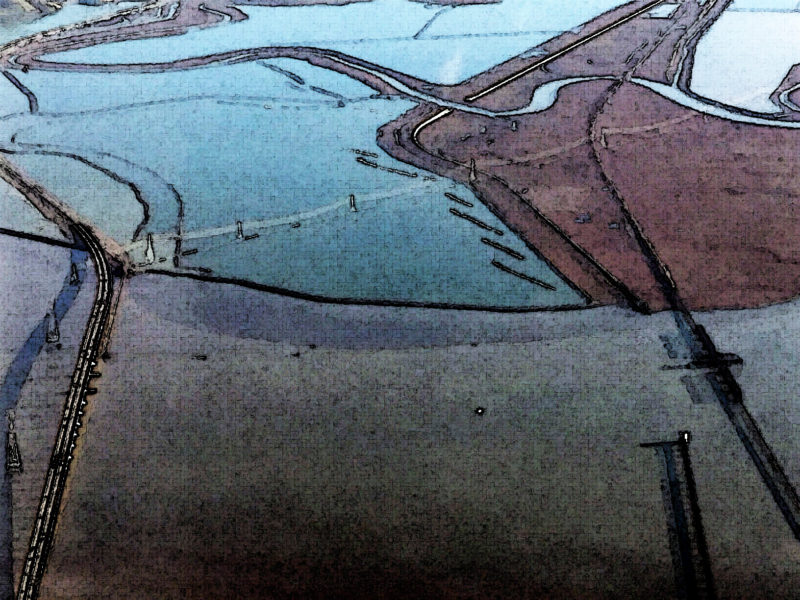 In an airplane, I just point my iPhone to things that look interesting, through the usually smudged and wet windows. (These images are from approaching SFO and put through a watercolor filter.)
In an airplane, I just point my iPhone to things that look interesting, through the usually smudged and wet windows. (These images are from approaching SFO and put through a watercolor filter.)

Not so for someone with a passion for photography while flying. And with a passion for a cause: the environmental destruction happening across the globe in the pursuit of riches. I thought this was a timely topic given the impending retraction of protected national monuments and parks so the earth can be depleted some more. And I was impressed by someone who makes it possible for himself to travel to all these different countries that he photographed to warn us.
Let me introduce a man who is steering us all towards awareness of the hidden cost of consumerism. Henry Fair photographs the industrial scars of diverse countries while flying over them. The resulting images are almost too beautiful to believe, particularly when thinking about the ugliness of what they represent. So I am breaking my rule of showing only my own photos (oh the freedom of blogging!) and present some of his. They are all contained in the link below:

CANADYS, SOUTH CAROLINA, USA. When ash comes into contact with water, contaminants including arsenic, lead, mercury, selenium and others can migrate into groundwater, lakes and streams. This plant (since closed) was cited by the US Environmental Protection Agency (EPA) in 2011 as a âproven caseâ of environmental damage. It is know to have contaminated groundwater with arsenic, and is one of the largest emitters of sulphur dioxide in the USA.

GRAMERCY, LOUISIANA, USA. Red mud waste material is pumped onto the upper surface of a massive waste impoundment in a water slurry. The impoundments are essentially very large shallow bowls, engineered to de-water the slurry through evaporation and an internal drainage system fed by an arrangement of funnel-like decant points where water collects in pools.

SPRINGVILLE, PENNSYLVANIA, USA. Collection pit for drilling waste containing ground rock, drilling muds (the lubricants and chemicals used during drilling), and in some cases radioactive material existing in the target shale layer. The overspray at the top is a violation and a danger to any water bodies downhill.

LAUSITZ, GERMANY. The earth and rock overburden covering the coal is excavated and moved aside by conveyor to allow access to the coal. The conveyor feeds the overburden to a machine with a long, swinging arm which distributes the material by oscillating back and forth as it pours. When the mine is depleted, the overburden is used to partially fill the remaining pit.

KIRUNA, SWEDEN. Waste impoundment at Kiruna Iron Mine. The fine waste material is mixed with water and pumped in a slurry through long systems of pipes, or âlaundersâ, to tailings impoundments where the water runs off and is collected in ponds.
How can poison, waste and destruction look so beautiful? Abstract paintings are shallow echoes of these natural occurring patterns. And yet the images make me itch to pick up a paintbrush again…..Next life.







Deb Meyer
So beautiful!